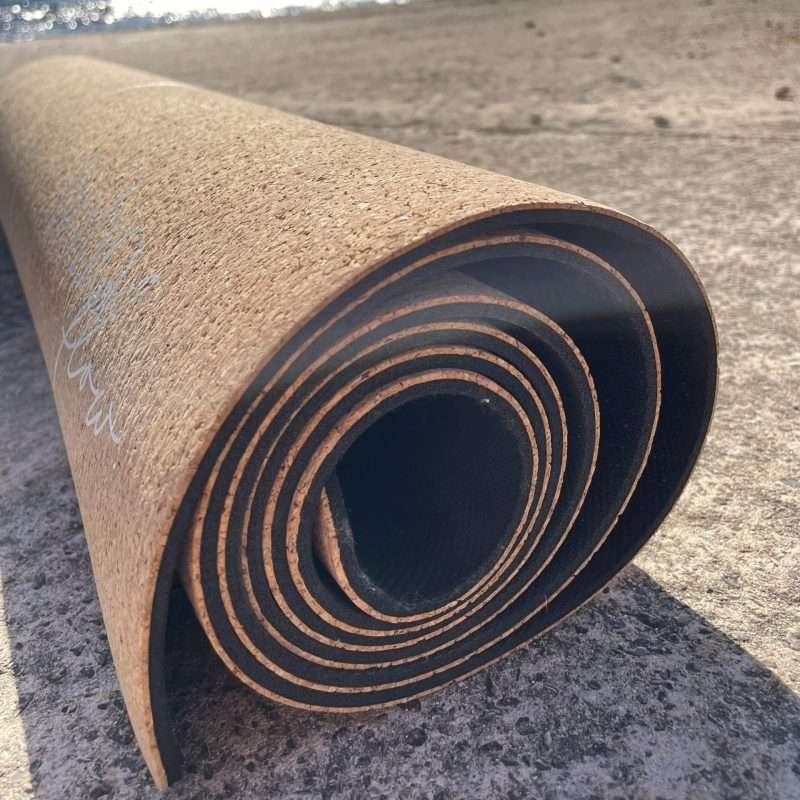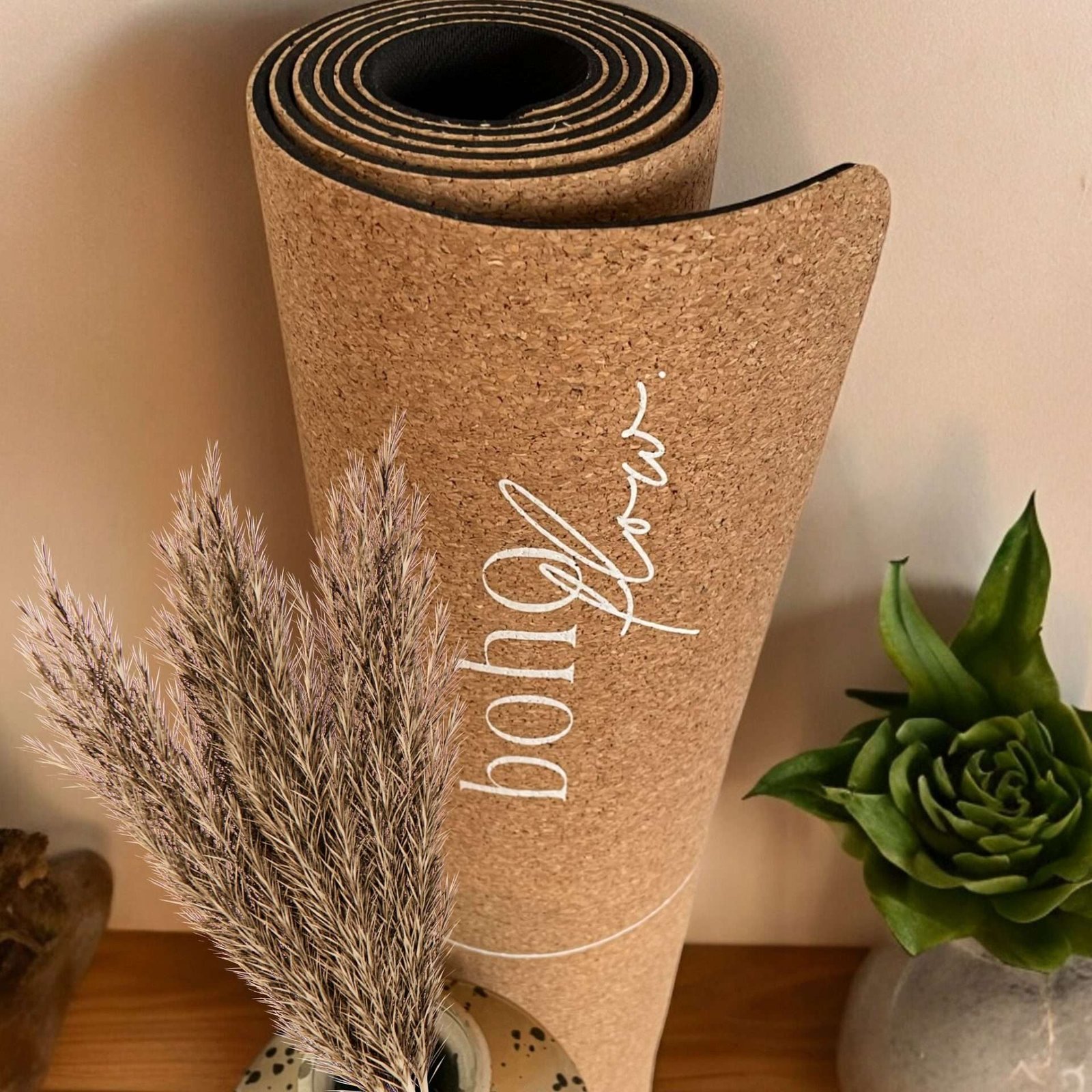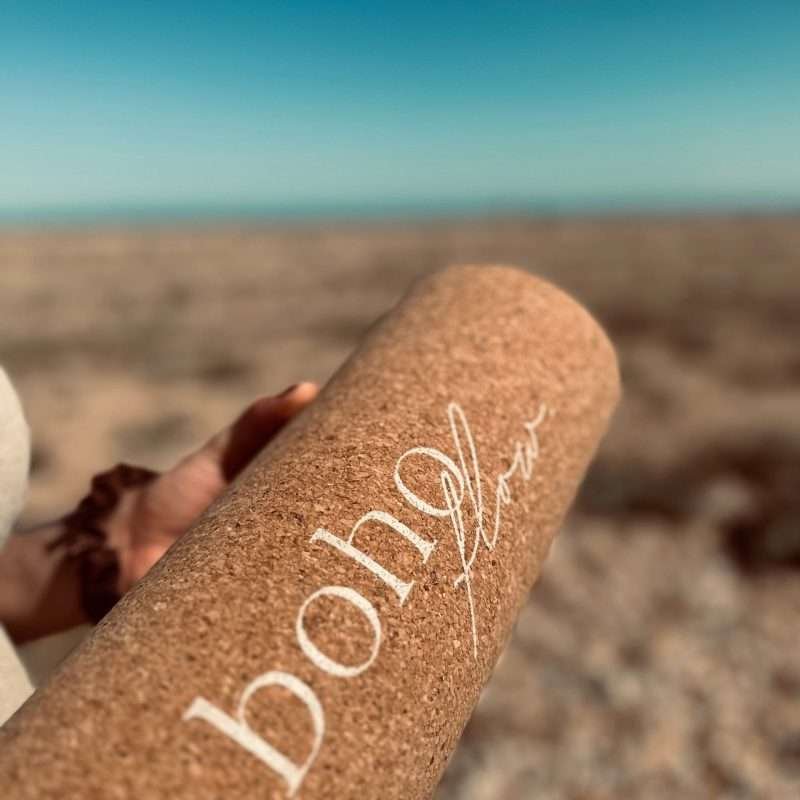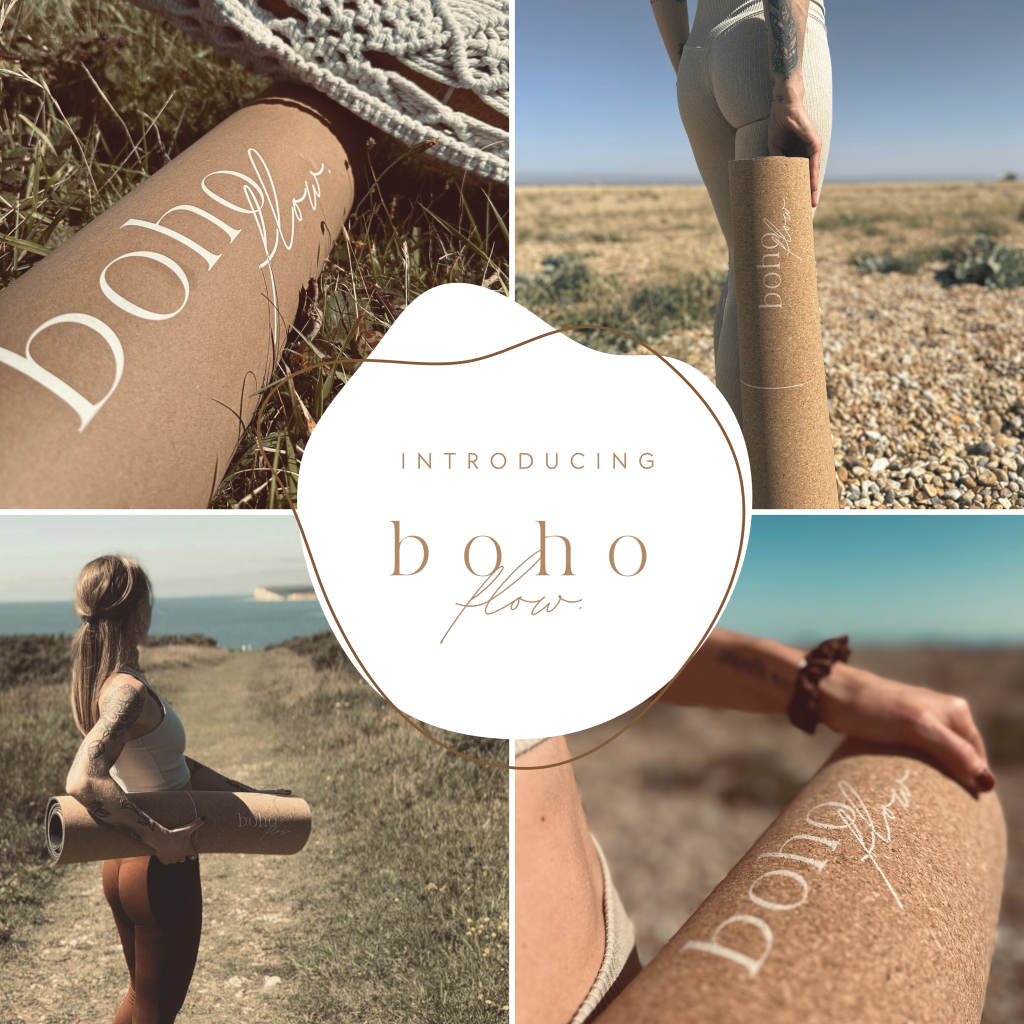
In the world of yoga mats today, the choice of your mat goes beyond just aesthetics or comfort — it’s a decision about sustainability, performance, and alignment with your values.
In many of our other articles, we discuss the benefits and unique aspects of cork yoga mats. Today we want to explore the two most common materials used as backing for cork yoga mats: Thermoplastic Elastomer (TPE) and natural rubber.
These materials can also come as their own yoga mat, or as a backing choice for cork yoga mats. The properties and benefits discussed in this article apply in all cases.
But what are those materials, what sets them apart, and which is the better choice for your practice? We explore all the aspects of these materials to help you make an informed decision.
Understanding TPE and Natural Rubber
Just by looking at the names alone, we can see one significant difference between these materials: The eco-friendliness of their composition.
TPE (Thermoplastic Elastomer):
TPE is a synthetic material known for its elasticity and durability. It’s a versatile polymer blend that combines the characteristics of thermoplastics and elastomers. Essentially, TPE is a type of plastic that behaves like rubber but can be molded and recycled like plastic.
Natural Rubber:
On the other hand, natural rubber is derived from the sap of the rubber tree (Hevea brasiliensis). It’s a renewable resource that offers excellent grip and resilience. Natural rubber is celebrated for its eco-friendly properties and biodegradability, as well as its durability and performance.

Sourcing and Sustainability
So then, how exactly are these materials sourced and how does that align with your values for choosing a yoga mat?
TPE:
TPE is a synthetic material, typically derived from a mixture of plastics, fillers, and additives. While it can be recycled, the production process often involves petrochemicals, which raises concerns about environmental impact – and the impact on your health. Additionally, the exact composition of TPE can vary between manufacturers, making it challenging to assess its sustainability credentials accurately.
Natural Rubber:
Natural rubber, as the name suggests, is sourced directly from rubber trees through a process called tapping. This process involves making small incisions in the tree bark to collect the latex sap, which is then processed into rubber. Since rubber trees are renewable and contribute to the preservation of tropical rainforests, natural rubber is considered a more sustainable option compared to TPE. It also means that natural rubber mats are made with all natural materials and generally free from chemicals and plastics.
Benefits and Drawbacks
Lastly, let’s break down what we all want to know: What are the benefits of each material and which one is the better choice for you?

Benefits of TPE:
- Cushioning: TPE mats are known for their “softness” compared to other types of mats, which people appreciate.
- Lightweight: TPE mats are generally lighter than natural rubber mats, making them convenient for travel and transportation.
- Allergen-Free: TPE is hypoallergenic and free from latex, PVC, and harmful chemicals, making it suitable for users with sensitivities.
Drawbacks of TPE
Although TPE mats are liked for their light weight and cushioning, they come with various other drawbacks. The most significant drawback of TPE mats is that they tend to curl up, which means the yoga mat will not lay flat and offer less grip on the floor.
Even though many do appreciate the cushioning, TPE tend to be “spongy”, which will offer you less stability. It can also cause a strain on your wrists if you like to spend a lot of time practicing Downward Facing Dog, Vinyasas or Arm Balances.
Another main drawback certainly is the usage of plastic in the product, which makes the choice of TPE less eco-friendly, sustainable and planet-conscious. Anyone looking for a green and eco-friendly choice should steer clear of TPE.
In addition, TPE mats may have a shorter lifespan compared to natural rubber mats, and some users report a chemical smell when new.
Natural Rubber vs. TPE

Benefits of Natural Rubber:
- Excellent Grip: Natural rubber provides superior grip on the floor, which means no sliding and a safe choice for your practice.
- Durability: Natural rubber is probably one of the most durable materials for yoga mats – whether on its own or as backing for cork yoga mats, these mats will last you a very long time.
- Stability: Natural rubber mats – or cork mats backed with natural rubber – tend to be more “solid” and less spongy, which means they offer superior stability and cause less strain on your wrists in weight-bearing poses.
- Eco-Friendly: Being derived from renewable resources, natural rubber mats have a lower environmental footprint compared to synthetic alternatives and are fully natural.
- Biodegradable: At the end of its lifespan, due to their all natural composition, natural rubber mats can biodegrade, reducing their impact on landfills.
Drawbacks of Natural Rubber
Yet, natural rubber mats tend to be weighty, which some people do not like as much for carrying around. However, the weight of a natural rubber mat is also what ensures that the mat lays flat and safely in place, and what provides it with longevity.
Natural rubber mats generally tend to feel less soft than TPE mats. For more cushioning, choose a thicker rubber mat (approx. 6mm or more). However, this will in turn make the mat weightier, too.
One small drawback of natural rubber mats is that they may have a strong odor initially, and some users with latex allergies might experience sensitivity to these mats.
However, in our opinion as professionals in the yoga industry with over a decade of experience, the benefits of natural rubber significantly outweigh any drawbacks, and they make a greener and healthier choice over TPE yoga mats.
Final Thoughts
When it comes to choosing between TPE and natural rubber for your yoga mat or as the backing for cork yoga mats, both materials offer unique benefits and drawbacks. TPE mats are spongy, lightweight, and hypoallergenic, but their sustainability credentials may be questionable due to their synthetic nature and the fact that they contain plastics.
On the other hand, natural rubber mats provide excellent grip, durability, eco-friendliness, and biodegradability, but they may not be a good choice for latex-sensitive individuals.
Ultimately, the choice between TPE and natural rubber boils down to personal preferences, values, and priorities. Whether prioritizing softness, durability, sustainability, or grip, both options offer viable choices for yogis seeking harmony between their practice and the planet.
For our Boho Flow cork yoga mat, we specifically chose a solid, durable, weighty natural rubber backing for its eco-friendliness and the benefits mentioned above. As yoga teachers, we believe that natural rubber (in combination with cork) is the best choice for your practice, your health, and for the planet.








